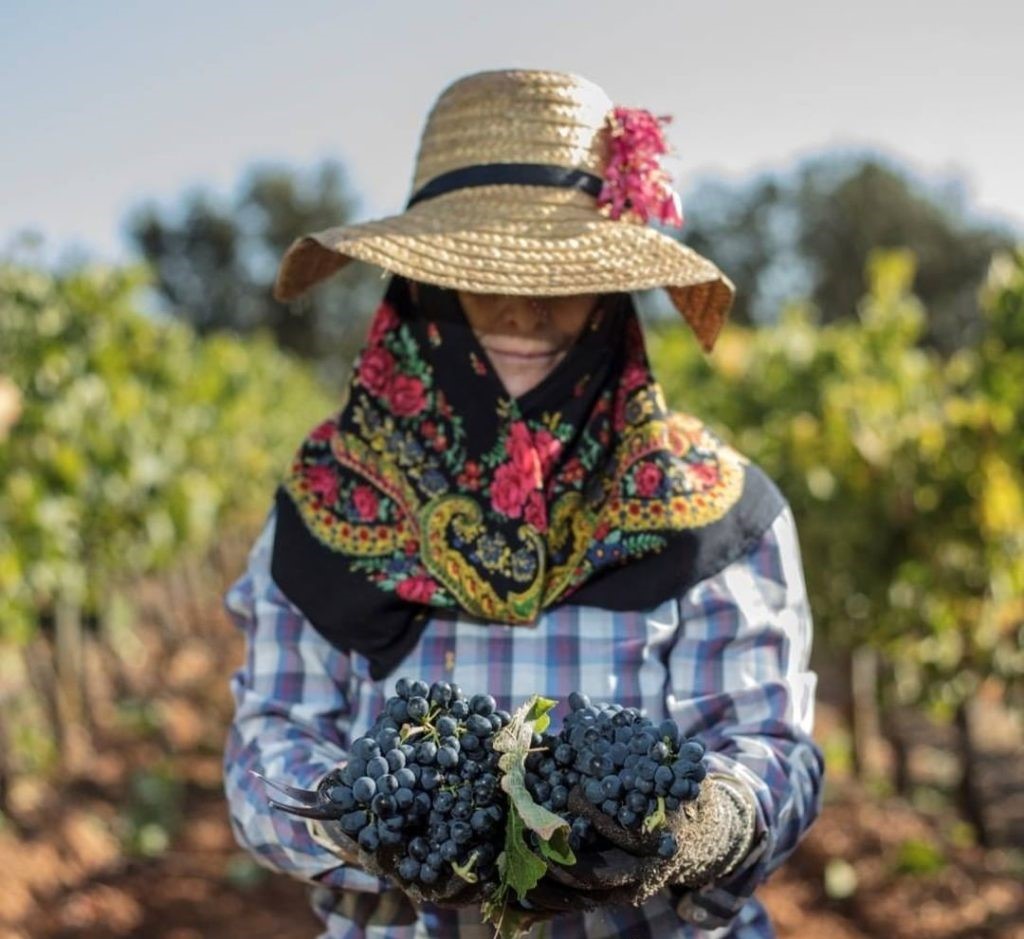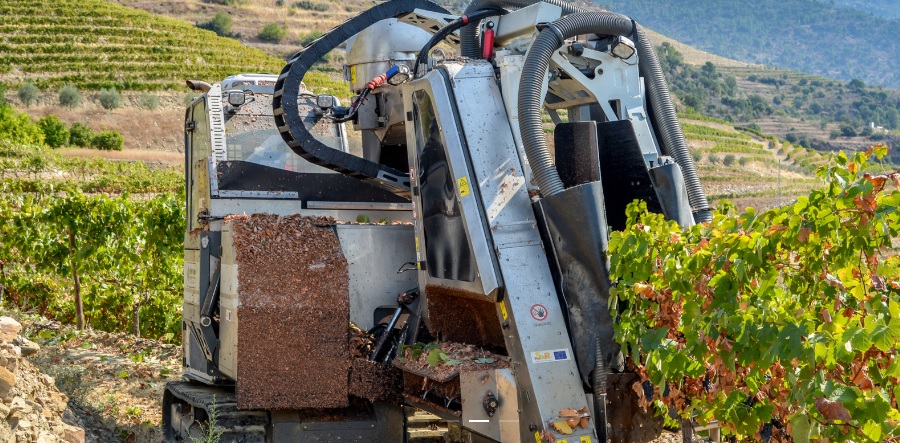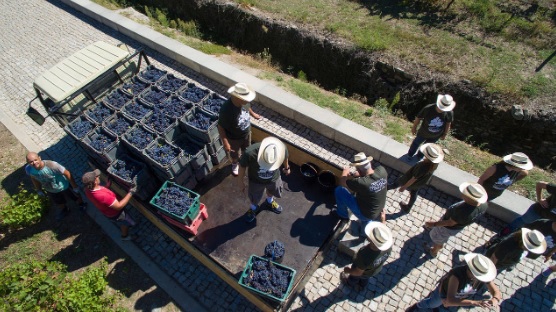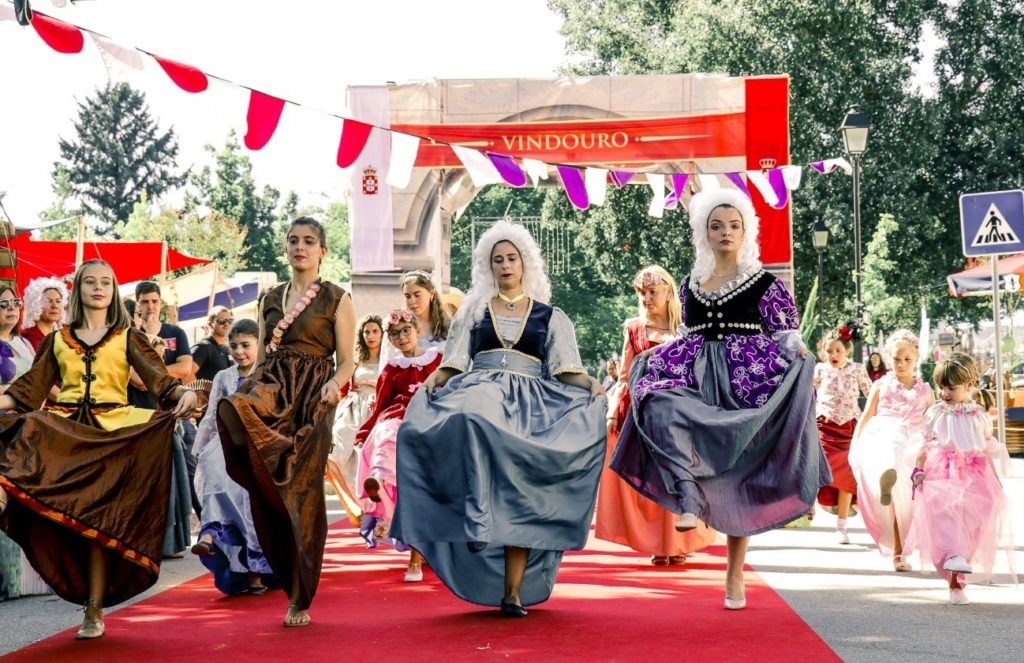The story began centuries ago when family and friends would get together to help in the harvest: the women would carry the wicker baskets on their heads, and the men would carry the wooden ladders that would help them reach all the bunches… And so, the traditional wine harvests were created to the sound of chirping birds, traditional music, drums and typical food.
Currently many different activities are offered by the wine producing Quintas and wine makers to keep the memories of the northern wine regions of Douro and Vinho Verde alive, involving locals and tourists in several experiences, which have its peak during the harvest.
September is traditionally the month of harvest, the month in which the grapes have reached the necessary sugars and acids for production, and as tradition dictates it is time to manually pick the bunches. This is the time to gather the grapes, carry them in baskets, foot treading them and make the nectar of the gods, also representing the commemoration of the year in the vineyards, wrapped in traditions that differ from region to region.
Typically, the grapes are picked by hand or with the help of scissors, and the treading of the grapes can still be done in the most rustic way: at dusk, people of all ages, wearing shorts or rolled-up pants, stomping the grapes to the rhythm of traditional music and chants, gathering family, friends and neighbors. Now, as in the past, this is still a moment of celebration in which hard work is combined with socializing.
Since the Douro “is the world’s largest area of mountain vineyard, accounting for 52% of the total classified mountain vineyard on earth”, having “40% of the Douro’s vineyards on slopes with gradients ranging from 30 to 70%”, some producers have already adopted innovative practices to face the topography and demographic challenges, as is the case with the new Mechanical Harvesting tool adopted by Symington in Douro.

When there are fewer pickers, it is much harder for grapes to be picked at their optimum ripeness and quality, as there is much less flexibility with the harvesting schedules. That’s why Symington initiated, in 2014, a project to plan ahead for the introduction of mechanized harvesting. After two prototypes, a series-production mechanical harvester was operational during the 2018 vintage. “The next stage is to adapt the existing vineyards where possible and develop ways of laying out new vineyards in such a way that the harvester can work effectively on them”.
Preserving the most popular traditions, many are the wineries that allow tourists to participate in the harvest, sharing knowledge about this cultural tradition and immersive experiences:

Quinta da Pacheca Harvest Experiences: the full day of Harvest includes breakfast, cut of the grape, followed by buffet lunch, wine tasting and “Lagarada” (Grape stomping). A program with a traditional dinner is also available.
Monverde Harvest Experience is inclusive for all family, where children are challenged to collect materials from the vineyard during grape harvesting, to later create a small project, which will be the postcard of the stay in Monverde. Also includes snacking and wine tasting.
Quinta da Avessada has an exclusive grape harvesting program where you will have the opportunity to visit the gardens of the Enoteca, treading grapes, have a tasting of liqueur wines, dine regional products paired with Avessada wines, among other activities.
Quinta de Ventozelo celebrates the harvest with entertainment, delivery of a harvest kit and a guided tour. The transport to the plot to be harvested is done in a Bedford, being an experience itself. The program includes a snack in the vineyard and a traditional lunch, as well as a boat trip.

Along with the grape harvest, the Vindouro is celebrated in S. João da Pesqueira, in September, as well. This festivity promotes traditional wine and gastronomic flavors of the region but also highlights the constitution of the first demarcated region of the world by Marquês de Pombal in 1761.
Performances by brilliant artists, a Pombaline parade and market, as well as a wide range of activities designed for wine and gastronomy lovers, are some of the highlights that mark this annual festivity. Vindouro is a meeting point for producers, restaurants, hotels, wine businesses and consumers. “The event’s connection to the Pombaline era makes perfect sense, both because it was during this historical period that the Douro Demarcated Region was established, giving it its own identity and a framework that the entire Region intends to maintain and strengthen”.
Source: Wine Tourism in Portugal; Symington; Quinta da Pacheca; Monverde; Quinta da Avessada; Quinta de Ventozelo; VisitPorto.
Photo credits: Quinta da Pacheca; João Portugal Ramos; Symington; Vindouro, S. João da Pesqueira
Learn more about Porto – Great Wine Capital